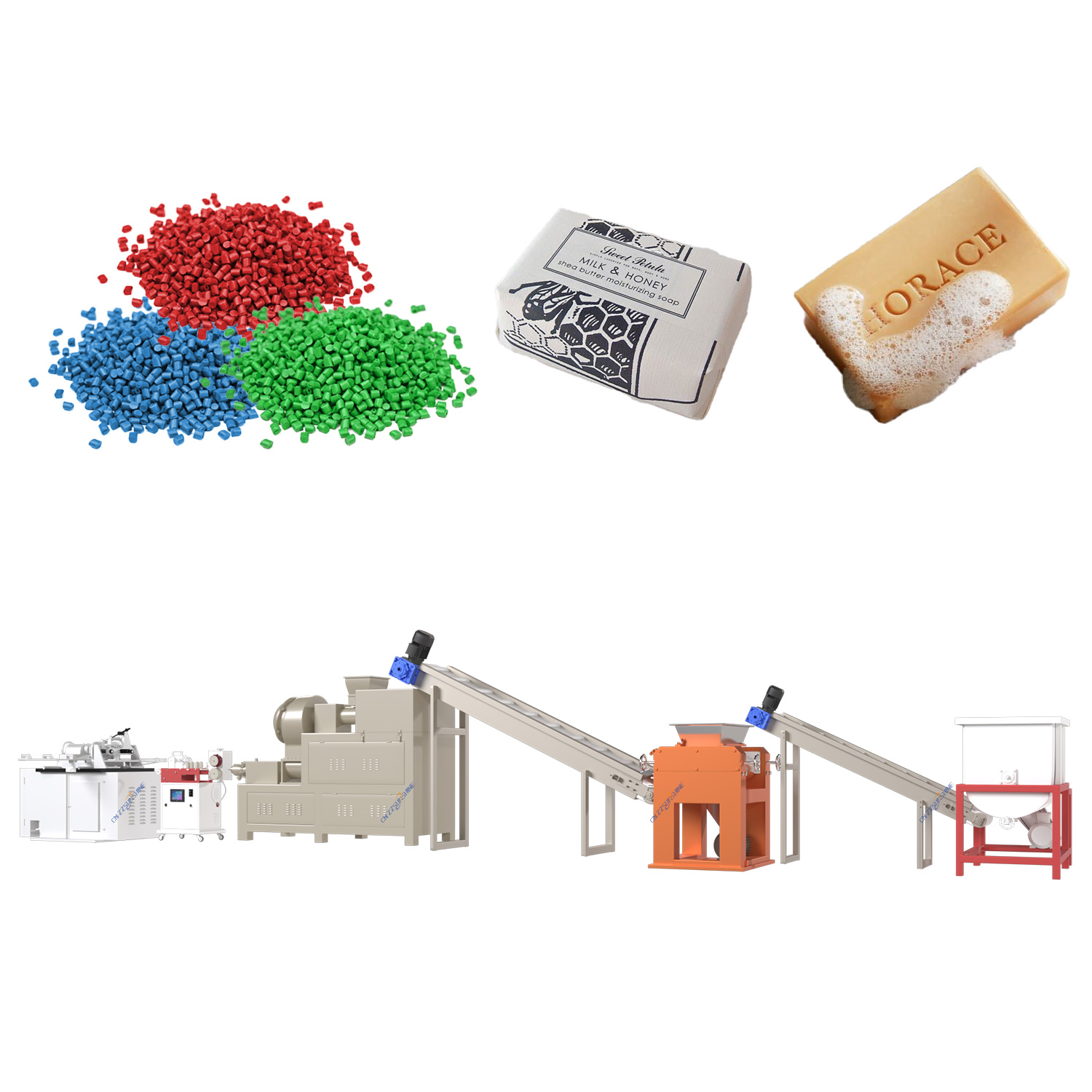Soap making production lines represent a sophisticated integration of machinery designed for high-volume, consistent manufacturing of various soap types, such as laundry bars, bath soaps, and toilet soaps. At the core of these systems, a vacuum plodder plays a critical role by refining soap mixtures under reduced pressure to eliminate air bubbles, ensuring uniform density and smooth texture. This component often pairs with an industrial mixer for chemical processing, which precisely blends raw materials like oils, lye, and fragrances to achieve optimal homogeneity without overheating. For instance, in laundry soap making lines, the mixer handles aggressive formulations while maintaining safety standards.
Following mixing, the soap paste moves through an automatic soap cutter, which slices large extruded logs into precise bars using electric washing mechanisms to minimize residue. This step is vital in toilet soap finishing lines, where clean cuts enhance aesthetic appeal and reduce waste. Additionally, a custom soap cutting machine can be tailored for specific dimensions, supporting diverse product ranges from small beauty soaps to large laundry bars. Automation extends to the entire soap production line, incorporating features like PLC controls for real-time monitoring, boosting throughput by up to 40% while lowering labor costs.
Key advantages include energy efficiency and scalability, as seen in bath soap making machines that adapt to varying batch sizes. For businesses, investing in a complete laundry bar soap production line ensures compliance with hygiene regulations and faster ROI, with modular setups allowing easy upgrades. Overall, modern soap plodder machines and integrated systems like vacuum plodders deliver reliability for factories aiming to dominate competitive markets through innovation and quality control.




